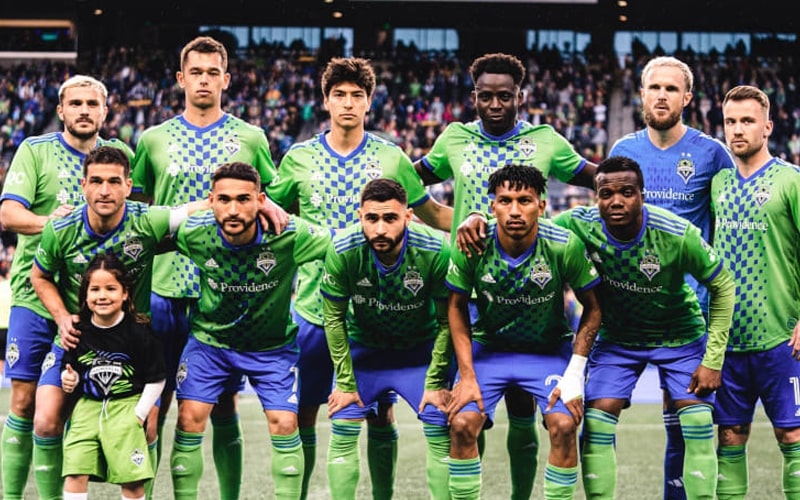Soccer, or as it’s known in the rest of the world, football, isn’t just a game of kicking a ball into a net. It’s a chess match, where strategies and tactics play a pivotal role in deciding the outcome of a match. In Major League Soccer (MLS), a melting pot of playing styles and tactics, understanding these approaches can greatly enhance your appreciation of the game. So, let’s break down some of the prominent playing styles you’ll see in MLS, using language that’s easy for everyone to grasp.
The Possession Game
One of the most eye-catching styles in soccer is the possession-based game. Think of it as keeping the ball to yourself, not letting the other team have it. Teams like LAFC and Atlanta United have shown a penchant for this style. It’s all about controlling the game through continuous passing and movement.
The key to a successful possession game lies in skilled midfielders. These players, often seen as the maestros of the team, have an exceptional ability to control the ball and make precise passes. They set the rhythm and pace of the game, often dictating how and when the team attacks.
Counter-Attacking Football
Counter-attacking is like the quick, sneaky punch in a boxing match. Teams that excel in this style, like the Columbus Crew, wait for their opponents to make a move, often drawing them forward, and then strike back rapidly. This tactic is especially effective against teams that love to keep possession and push high up the pitch.
Players crucial to this style are fast forwards and wingers who can run at defenders and exploit the spaces left by the opposing team’s attacking play. The sudden switch from defense to offense can be thrilling to watch, as it often leads to fast-paced, end-to-end gameplay.
High-Pressure Tactics
High-pressure, or high-pressing, is a tactic where a team aggressively challenges the ball as soon as they lose possession. Think of it as not giving your opponent a moment’s peace. Teams like the New York Red Bulls have utilized this strategy effectively in MLS.
This approach requires incredible fitness and coordination, as players need to swarm the opponent in numbers and cut off passing lanes. When executed well, it forces the opponent into making mistakes, leading to turnovers in dangerous areas of the pitch.
Defensive Resilience
On the other end of the spectrum, some teams focus on building a fortress-like defense. Teams employing this tactic, like the Seattle Sounders at times, focus on keeping a solid defensive line and limiting the space and opportunities for their opponents.
This playing style may not always be glamorous, but it’s effective. It relies heavily on disciplined defenders and a goalkeeper who can organize the backline and make crucial saves. The aim is to frustrate the opponent and capitalize on the few chances created, often from set pieces or quick breaks.
The Wing Play
Wing play is about using the wide areas of the pitch. Teams like Toronto FC often utilize this tactic, where the emphasis is on speedy wingers or full-backs who provide width and deliver crosses into the box.
The effectiveness of wing play hinges on the ability of wide players to beat their markers and deliver quality balls into the penalty area. It’s a style that thrives on creating mismatches and taking advantage of aerial prowess.
Tiki-Taka and Its Influence
Originating from Spain, Tiki-Taka has found its way into MLS, most notably with teams coached by former Barcelona players or disciples of this philosophy. This style is an advanced form of possession play, characterized by short, quick passes and constant movement.
It’s a beautiful style to watch when performed correctly. It’s like a dance with the ball, where players move in a choreographed manner, creating patterns that bewilder opponents. The challenge, however, lies in its execution, requiring players with exceptional technical skills and understanding of space.
The Blend of Styles
What makes MLS unique is the blend of these styles. Due to the diverse backgrounds of players and coaches in the league, you’ll often see a mix of these tactics in a single game. This diversity is what makes MLS an exciting league, as teams are constantly adapting and evolving their approaches.
Understanding Tactics: The Key to Enjoying Soccer
Understanding these tactics isn’t just about recognizing what’s happening on the pitch; it’s about appreciating the thought process behind every pass, tackle, and goal. Soccer is a thinking game as much as it is a physical one, and an understanding of these tactics can deepen your love and appreciation for the sport. Every team’s strategy is a carefully crafted plan, a combination of their players’ strengths, the coach’s philosophy, and the unique challenges presented by their opponents. It’s this strategic depth that adds layers of intrigue to every match.
Role of Coaches in Shaping Tactics
The coach is the architect of a team’s playing style. In MLS, with its varied roster of coaches from different soccer cultures, the influence of the coach is particularly evident. They not only decide the tactics but also inspire their players to buy into their vision. From the sideline, they orchestrate the team’s movements, making real-time decisions that can turn the tide of the game.
Flexibility and Adaptation
In modern soccer, and especially in a league as diverse as the MLS, flexibility is key. Teams often have to adapt their playing style based on their opponents, injuries, or even the weather conditions. This adaptability can be seen in how teams shift from one style to another, even within a single match. It’s a testament to the tactical acumen of the players and their ability to execute different game plans.
The Role of Technology and Data
The use of technology and data analysis in soccer has grown exponentially. Teams in MLS now employ data analytics to understand their own playing style and scout their opponents. By analyzing patterns, teams can anticipate and counter the strategies of their opponents, adding another layer to the tactical battle.
Youth Development and Future Tactics
The future of tactics in MLS also hinges on youth development. As young players are trained in these diverse playing styles, they bring a fresh perspective and skills to the league. This continuous influx of new talent ensures that MLS remains at the forefront of tactical evolution in soccer.
In conclusion, soccer tactics in MLS are as diverse and dynamic as the league itself. From the possession game to high-pressure tactics, each style brings its unique flavor to the game. As fans, understanding these tactics not only enhances our viewing experience but also deepens our appreciation for the beautiful game’s intricacies. In MLS, tactics are not just about winning; they are about expressing a philosophy, a culture, and the ever-evolving nature of soccer.




